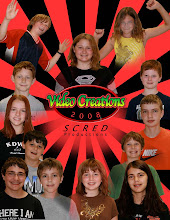How can I reduce story structure into a such a brief description? It's like taking off the grilled chicken and pineapple off my favorite kind of thin crust pizza, but here we go...
Every story (and scene sequence)has:
A beginning
A middle
An end
The beginning is the exposition. The beginning tells the audience the answers to the who-what-where questions so that the audience can grab hold with enough interest to keep paying attention. Ever stop paying attention to a movie at its beginning? Ever felt extremely confused at the beginning of a movie and never have that confusion go away? The beginning should try to help the audience enter the story. Even commercials have a story structure. These days it seems more commercials have less to say about the product and spend more time on the story structure of the commercial. How can you plan your video to help your audience understand the who-what-where?
The middle involves the conflict or problem. There will be a conflict/problem to face and overcome in every good story. As the story gets more complicated and more intense the action rises. So, the viewer is expecting more visual intensity. Action-reaction shots appear more often. More close-ups and unusual angles crop up. The individual shots speed up. All this adds up to a different feel than the beginning.
The end involves the solution to the conflict. This is called resolution. The problem is solved and the audience usually is satisfied with the ending. The shots then should slow down and should take longer before the next clip comes in. There will be more wide shots. And then they ride off into the sunset.
If you are a Star Wars fan, take a look at the first Star Wars movie (episode IV). Recently I took a look at it on DVD and chose the chapters option. When you look at individual chapters you can see how this story structure is followed (or not followed). Many of the chapters in Episode IV follow the simple to complex story structure I mentioned above. Many of the sequences start with extremely wide simple shots and then move into a more complex series of shots and then transition to the next scene with another wide simple shot.
Wednesday, June 11, 2008
Subscribe to:
Post Comments (Atom)



No comments:
Post a Comment